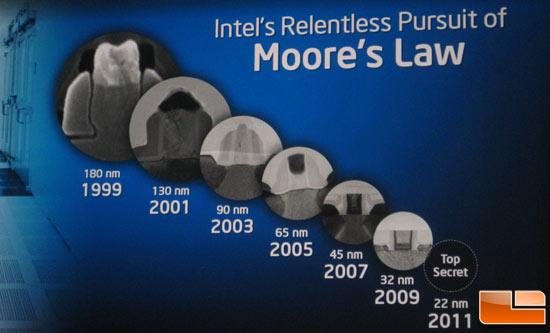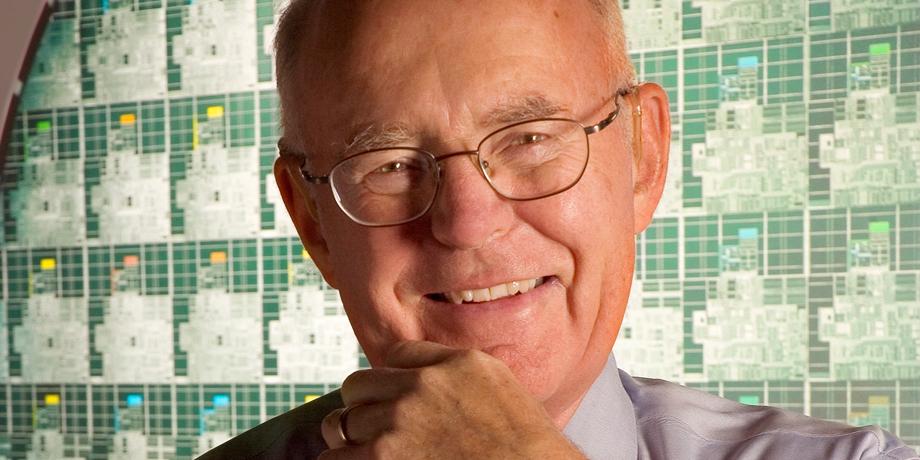For those who follow technology, there isn’t a single concept which embodies the incredible progress we have made over the last several decades, than that of Moore’s Law. In a paper written in 1965, a man named Gordon E. Moore made a prediction, which at the time was mocked by many. The prediction stated that the number of transistors per square inch on integrated circuits would double every year, because it had done so up until that point in 1965. Since then the law has been modified, and many within the industry use the 12-24 month time frame for the doubling. Three years after Moore’s famous prediction, he founded Intel, the semiconductor manufacturer, now worth in excess of $150 billion.
Over the years Moore’s Law has been said to apply to various different segments of the computer industry, as well as other tech industries. It represents exponential progress, something that has certainly been seen in numerous technologies over the past 50 years. Now that you understand what Moore’s Law is, you may be asking yourself how this relates to 3D Printing.
Over the past several months, the world’s largest 3D printer manufacturer, 3D Systems, has used the phrase on several occasions to describe progress in 3D printing speeds that we’ve seen in the last decade. Back in November of last year, Avi Reichental, the company’s CEO, stated the following, after comparing the industry’s progress to Moore’s law, “Printers are going to double up on performance and double down on costs. Expect printers to become real powerful home appliances. The train has left the station.”
This wasn’t the end of the Moore’s Law talk though. On June 3rd, at a presentation sponsored by Bank of America, and Merrill Lynch, a company executive stated that the speeds of 3D printing over the last ten years has been doubling, on average, every 24 months. Shortly after this statement, 3D systems, on June 10th released a video, touting their amazing progress within the manufacturing industry. The video stressed the point that the company had broken the speed barrier, allowing them to manufacture items at speeds faster than that of injection molding. Near the end of the video, the same statistic is mention, in that 3D printing speeds are doubling every two years. The video can be seen below:
Considering these statements, it appears that the company has set a roadmap for themselves, one which follows a path similar to the exponential progress seen by Moore’s Law. The interesting thing is what happens if we extrapolate this trend and look ten years down the line.
If what Reichental and other executives within 3D Systems believes to be true, turns out to in fact be the case, within the next 10 years 3D printing will be incredibly fast. If speeds double every 2 years, that equates to speeds 32 times that of today by the year 2024. For instance if a 3D printed toy car takes 4 hours to print today, by 2024 that same car would take just seven and a half minutes to print. Now, taking this a step further, a company called Local Motors is planning to 3D print an actual car in Chicago this September. They expect the process to take around 5-6 days. If what 3D Systems predicts, becomes reality, that same car will only take about four and a  half hours to print within a decade’s time. Such an accomplishment would have far reaching implications throughout the manufacturing world, and if you extrapolate numbers even further, past the 10 year horizon, things become almost scary.
half hours to print within a decade’s time. Such an accomplishment would have far reaching implications throughout the manufacturing world, and if you extrapolate numbers even further, past the 10 year horizon, things become almost scary.
There have been thousands of predictions made by executives of companies within every industry, which are laughed at today for their lack of foresight. Just because a CEO of a company makes a statement, doesn’t mean it’s a fact. Nevertheless it certainly can make one’s ears perk up. Whether we will be 3D printed cars within hours, or little plastic toys within seconds, is yet to be seen, however, the way things have progressed in just the last year alone, makes me believe that such a future is very much possible. 3D printing speeds have been following a path of progression which mimics that of Moore’s law, but will it continue?
What do you think? Let’s hear your opinion in the Moore’s Law of 3D printing forum thread on 3DPB.cm
Subscribe to Our Email Newsletter
Stay up-to-date on all the latest news from the 3D printing industry and receive information and offers from third party vendors.
Print Services
Upload your 3D Models and get them printed quickly and efficiently.
You May Also Like
Nike’s 3D Printed Air Max 95000 Revealed at ComplexCon
Nike has increased its branding emphasis on 3D printing across multiple releases this year: the latest was just announced at ComplexCon in Las Vegas. The new drop is the Air...
When Sneakers Go Open-Source: Bambu Lab and Presq Take 3D Printing into Streetwear
Sneakers aren’t just shoes. To many people worldwide, they’re culture, identity, and community; the kind of everyday object that has meaning far beyond its function. From limited-edition drops to streetwear...
How Portland’s Old Town Is Becoming a Footwear Innovation Hub
Portland’s Old Town district is taking on a new role as a hub for footwear and apparel innovation. The project, called Made in Old Town (MiOT), is a 323,000-square-foot campus...
From Idea to Footprint: HILOS and 3D Printed Shoes
The world of 3D printed footwear is moving beyond experiments. What was once a niche hub of design and prototyping is beginning to show signs of becoming a real market,...


































